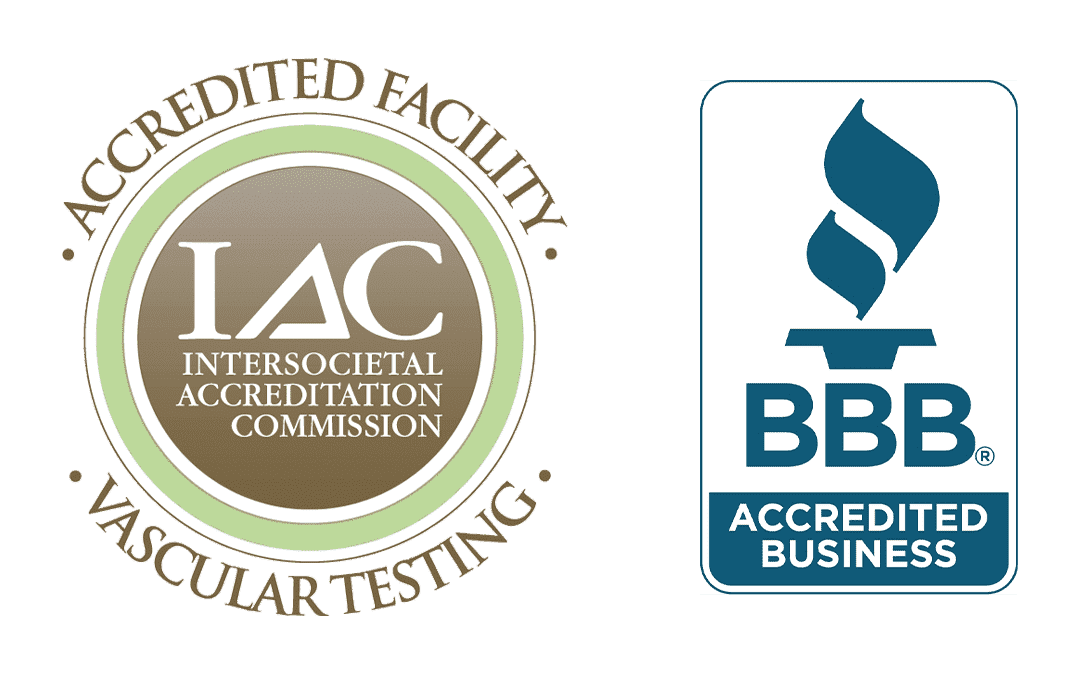Aneurysms occur when a part of the artery wall is damaged and weakened, allowing it to “balloon out” or expand. When the wall of a blood vessel weakens, a balloon-like dilation called an aneurysm sometimes develops over a long time. This happens most often in the abdominal aorta, an essential blood vessel that supplies blood to your legs but can happen in any artery of the body.
The most serious threat an aneurysm poses is rupture, which causes massive bleeding to occur. It is of extreme importance to find the aneurysm first, prior to rupture, to repair the diseased artery.
If you have a condition that weakens the artery walls, you are more at risk. These types of factors would include atherosclerosis, high blood pressure, and high intensity or long-term smoking.

You Have a Choice When It Comes to Vascular Care.
Get an Appointment at VIC In 3 to 5 Days – Without a Referral!
You Have a Choice When It Comes to Vascular Care.
Get an Appointment at VIC In 3 to 5 Days – Without a Referral!
Ruptured aortic or peripheral artery aneurysms often present with severe pain and low blood pressure.

Ruptured cerebral aneurysms present with a sudden severe headache. Many describe this as being the worst headache they have ever experienced.
A leaking aneurysm is when the aneurysm leaks a slight amount of blood but does not fully rupture. This condition may cause sudden, severe headaches. This is an emergency often requiring a surgical intervention.

Your medical provider will begin by asking you questions to ascertain a complete history of the patient. In the exam, he/she may do the following:
After the provider completes the exam, an ultrasound test may be ordered. This is a simple, painless, non-invasive test that will allow for measuring and locating exactly where the aneurysm lies in the body. Additionally, a CT scan may also be ordered to gain more detail of the aneurysm.

The only way of treating an aneurysm is through a surgical procedure; this can be an open repair or an endovascular procedure. In some cases when the aneurysm is too risky to operate on, lifestyle modifications and medications may be used to monitor and control the situation. Due to the risk involved in aneurysm repair, many doctors will defer to medication optimization, risk factor modification, and observation of the small aneurysms until the risk-benefit ratio favors surgery.
The best preventative steps would be to reduce your risk factors that you are able to control and to be aware of the ones that you cannot control. Be aware if you are in the at-risk category and pay attention and listen to your body. The best defense is early detection. If you are experiencing these symptoms, seek immediate medical attention.

The location of the aneurysm will determine the severity and progression. The most important thing you can do is to be diagnosed and treated early. Maintain routine exams and follow up with your doctor as prescribed.
Aortic aneurysms occurring in the abdominal aorta, and cerebral aneurysms within the brain are linked to the hardening of the arteries, also known as atherosclerosis. This condition can either be genetic or caused by high blood pressure and especially high-intensity or long-duration smoking.
The only way to treat/repair an aneurysm is to have it repaired with a surgical procedure or an endovascular surgical approach.
Sudden severe headache, nausea and vomiting, stiff neck, blurred/double vision, light sensitivity, seizure, drooping eyelids, confusion
Your doctor will begin with a history and physical, including family history and a complete exam – listening to your heart, blood pressure check, checking the artery flow in your neck, feeling the abdomen for masses, and checking behind the knees for popliteal aneurysms.
